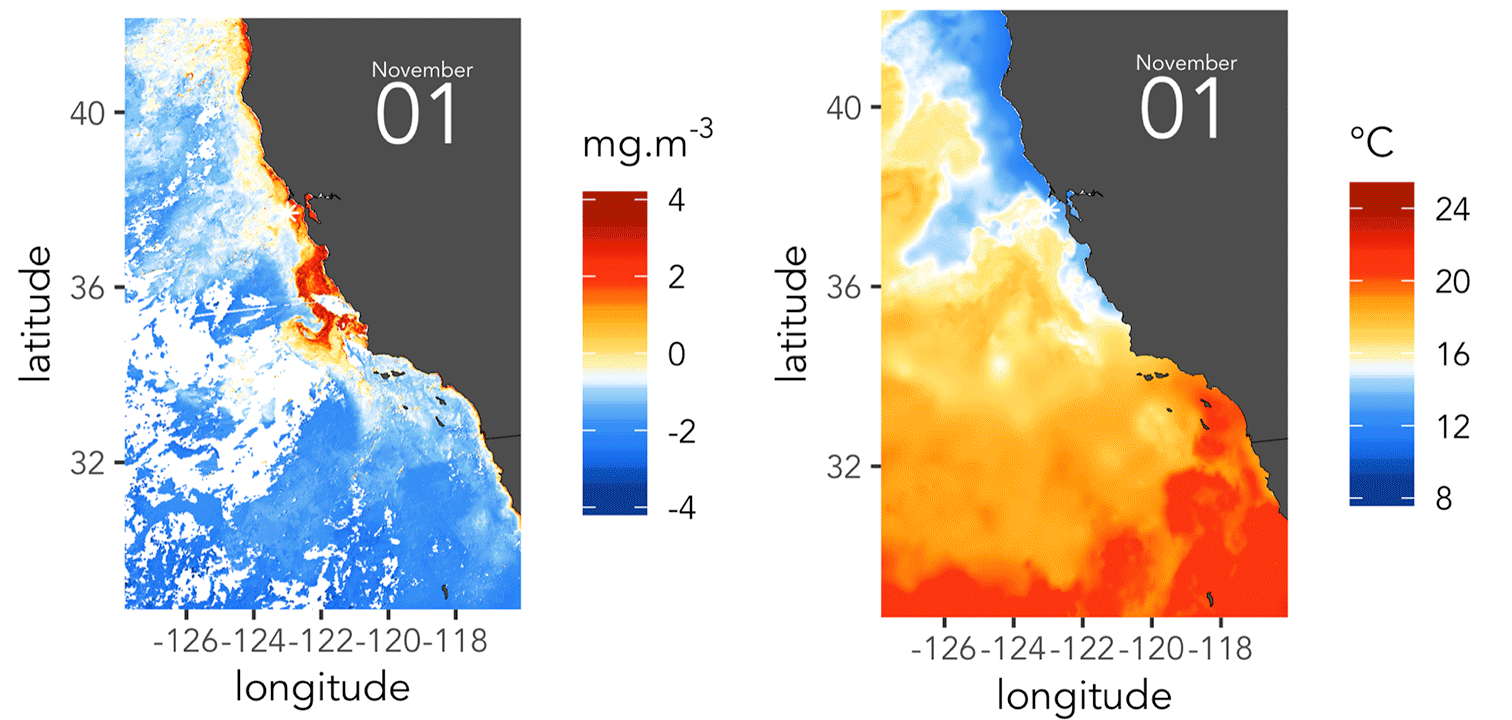Sometimes, an animated figure tells the story better than a static one. We have been tracking the non-breeding movement patterns of Cassin’s auklets from Southeast Farallon Island since 2015, in an effort to understand the environmental drivers of their winter dispersal. Part of the work I’m doing for my PhD is linking the movements of auklets to remotely sensed conditions relevant to their foraging ecology, in the case of this animation chlorophyll-a concentration (left) and sea surface temperature (right) from November 2017 through January 2018. Chlorophyll, the photosynthetically active molecule that gives plants, algae, and certain types of bacteria their green pigment, is used as a measure of the concentration of phytoplankton. Krill, which comprises much of the Cassin's auklet diet, graze on phytoplankton, so it’s reasonable to assume productive areas with high concentrations of chlorophyll-a likely contain greater densities of krill than areas of low chlorophyll-a. Similarly, lower sea surface temperatures are generally associated with nutrient rich cold water from depth, which help spark blooms of phytoplankton. One hypothesis, visualized with this animation, is that Cassin’s auklets are searching for colder regions of higher productivity during the winter months. The next step is to test this hypothesis with a series of competing models, to see which best explains the patterns observed in the data.
